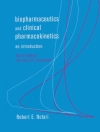Sodium reabsorbing epithelia play a major role in whole-body sodium homeostasis. Some examples of sodium regulating tissues include kidney, colon, lung, and sweat ducts. Sodium transport across these membranes is a two-step process: entry through an amiloride-sensitive sodium channel and exit via the ouabain-sensitive sodium/potassium ATPase. The sodium entry channels are the rate-limiting determinant for transport and are regulated by several different hormones. The sodium channels also play a significant role in a number of disease states, like hypertension, edema, drug-induced hyperkalemia, and cystic fibrosis. Amiloride-Sensitive Sodium Channels: Physiology and Functional Diversity provides the first in-depth exchange of ideas concerning these sodium channels, their regulation and involvement in normal and pathophysiological situations. – Summarizes current state of amiloride-sensitive sodium channel field- Analyzes structure-function of epithelial sodium channels- Discusses immunolocalization of epithelial sodium channels- Examines hormonal regulation of sodium channels- Discusses sodium channels in lymphocytes, kidney, and lung- Considers mechanosensitivity of sodium channels- Provides ideas on sodium channels and disease
Amiloride-Sensitive Sodium Channels: Physiology and Functional Diversity [PDF ebook]
Придбайте цю електронну книгу та отримайте ще 1 БЕЗКОШТОВНО!
Мова Англійська ● Формат PDF ● ISBN 9780080585185 ● Видавець Elsevier Science ● Опубліковано 1999 ● Завантажувані 6 разів ● Валюта EUR ● Посвідчення особи 2264080 ● Захист від копіювання Adobe DRM
Потрібен читач електронних книг, що підтримує DRM












